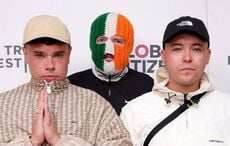Another fascinating Manhattan story unfolds in Thomas Kelly's third novel "Empire Rising." The story is about the construction of a massive skyscraper in a tense city, where the people are unsure of what exactly is awaiting them in the future. That may sound a bit like New York in the wake of 9/11, but in fact Empire Rising is set in the early days of the Great Depression, when the Empire State Building was erected. Kelly masterfully uses this event to paint a broad portrait of New York at this time, from striving artists to crooked politicians to IRA gunmen on the run. Kelly's work is particularly interesting in its exploration of the Irish immigrant wave of the 1920s and 1930s, when Ireland was both wearied by, yet still immersed in civil war. Construction of the Empire State Building began on St. Patrick's Day, 1930. Al Smith, the beloved Irish- American battered by anti-Catholicism during his presidential run in 1928, was in charge of the project. Michael Briody is one of many immigrants working on the job, but in Kelly's hands he is as vital and vivid a character as any political kingmaker. Briody is still fighting for the cause in Ireland, yet is also drawn to his new life in America by Grace Masterson, an artist who lives in a houseboat off of the East River. Trouble starts when we learn that Grace is also involved with a Tammany Hall henchman. Thus, Briody, and the reader, are thrust into Kelly's world of machine hacks and working men. As with his previous novels "The Rackets" and "Payback," few writers working today depict working class New York with Kelly's detail and affection. This time around, though, Kelly adds on additional layers, such as Jazz Agey night life, clubhouse machinations and real-life historical figures, such as Smith, as well as the ambitious Franklin Delano Roosevelt. All of this makes "Empire Rising" Kelly's finest achievement to date. ($25 / 390 pages / FSG)




Comments